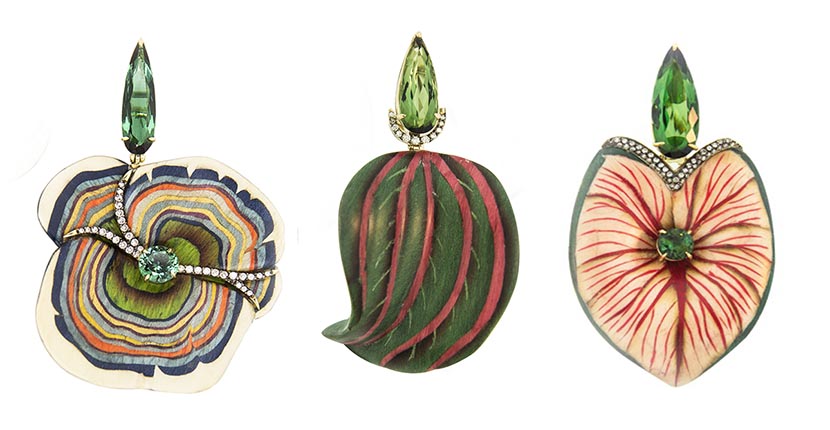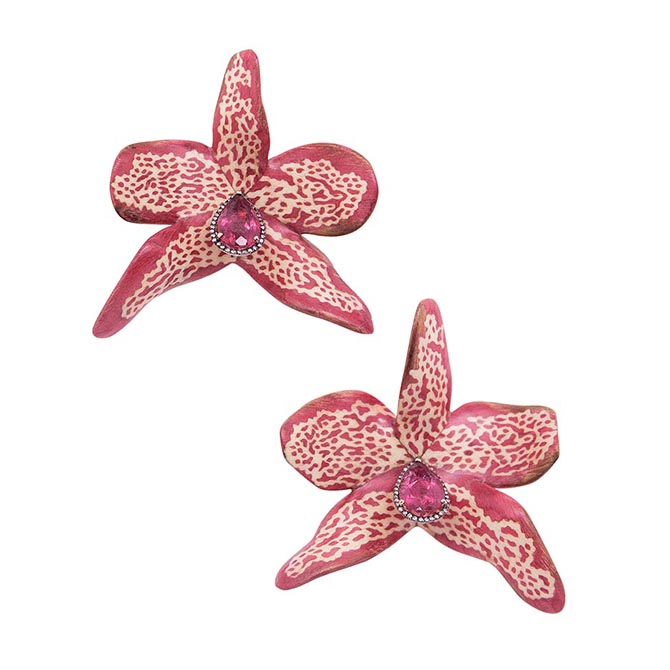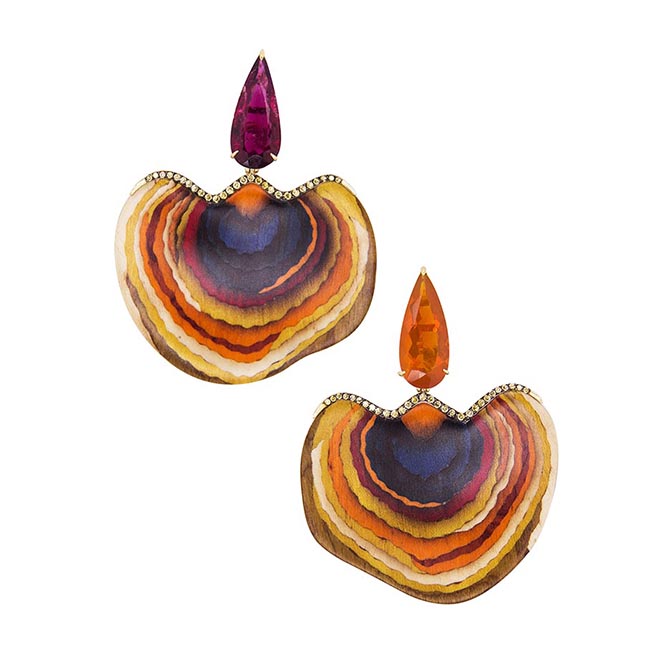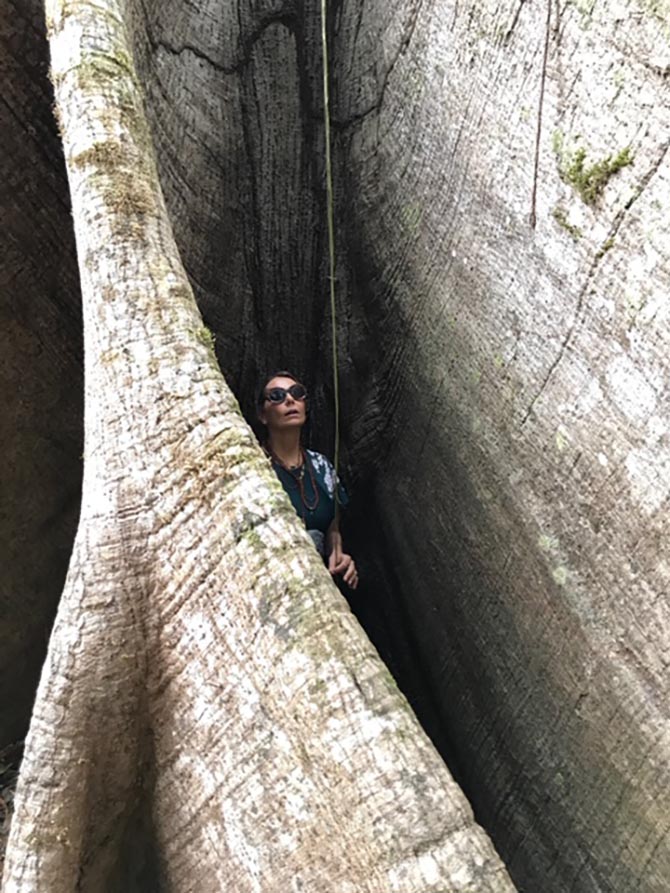
Earrings from Silvia Furmanovich’s Botancial collection made of wood marquetry, gold, diamonds and tourmalines. Photo courtesy
Jewelry News
Silvia Furmanovich’s Amazing Marquetry Jewels
The designer shared details about her new Botanical collection rendered in wood
Is jewelry art? It’s a question that has been hotly debated lately. Honestly, I like to think of jewelry as jewelry because I feel the imagination, materials and manufacturing involved in the work is quite enough. The semantics don’t generally interest me. Yet, when I look at the new Botanical collection by Brazilian sensation Silvia Furmanovich, I can’t help but think Art with a capital “A.” It’s the painterly quality of the marquetry in the new work that makes me go there.
Silvia has been creating jewels in the age-old marquetry technique for a couple of years now. Various themes have appeared in the woodwork that is painstaking created by craftsmen in Acre, a state in western Brazil. For the new Botanical collection, Silvia found inspiration in the Amazon rainforest near where her artisans are located. She visits the remote region for a week once every three months to oversee the creation of her jewels and as she says, “understand more deeply how each piece is put together.” Perhaps it is the shared understanding between the designer and her craftsmen of the otherworldly nature that surrounds them that resulted in the emotional, vibrant new jewelry.
Find out more about the Botanical collection in my interview with the designer below.

Silvia Furmanovich Spotted Orchid sculptural wood marquetry earrings set in 18k gold with diamonds and rubellites. Photo courtesy
The jewels are absolutely incredible. The colors, the shapes and all the various gems are mind-boggling. Once you returned from the Amazon rainforest what was the process on the design?
The pieces are modeled from real life flower and plant species that I encountered during my trip, such as banana flowers, begonia leaves, calla lilies, orchids and even multi-colored mushroom that grow in the woods. I also did deep research into how plants are represented in botanical studies throughout history, such as in the work of English physician Robert J. Thornton or the German painter Barbara Regina Dietzsch and some designs are inspired by those images.

Silvia Furmanovich blue and orange mushroom sculptural wood marquetry earrings set in 18k gold with diamonds and mismatched rubellite and fire opal tops. Photo courtesy
How has your work evolved with the artisans over the last two years while you have been making marquetry jewels?
This year we started creating marquetry applied to sculptural, three-dimensional wooden surfaces, which was a technical feat! This collection represents an evolution of the marquetry process, began in 2016. The challenge here was dealing with very small, curved surfaces and multiple layers of wood. Each piece has to be first sculpted out of wood then sent to the marquetry team, where they receive an overlay of different wood veneers. Only then can they be set in 18k gold with gemstones and diamonds. This particularly painstaking process allows for the creation of details at a very minute scale. For example, the different shades of the wood create a gradient-shading and illusion of depth.

Silvia Furmanovich Ipê flower sculptural wood marquetry earrings set in 18k gold with diamonds and tourmalines. Photo courtesy
This collection seems like one of the biggest you have ever created. How long did it take to put together?
You are correct that there is a wide variety of pieces. I was inspired by the great number of species and abundance found in nature. Just the marquetry of one jewel can take a week and a half. To get to the finish piece, it can take up to a month. The process is 100% realized by hand, so no two pieces are exactly alike due to the tonal varieties in the wood.

Silvia Furmanovich blue mushroom sculptural wood marquetry earrings set in 18k gold with diamonds and tanzanites. Photo courtesy
Marquetry has truly become one of your most well-known signatures. What’s your favorite part about it?
The important thing for me is the process and to always evolve through creation. We want to create something innovative, something that will surprise people. We are also interested in keeping alive forms of craftsmanship that are disappearing with advances in technology. Preserving the specialized work of artisans is key to my work.

Designer Silvia Furmanovich exploring in the Amazon rainforest. Photo courtesy
Related Stories:
Inside Daniela Villegas’s Party at Deyrolle in Paris
Viola Davis’s Necklace Has An Amazing Backstory
Ana Khouri Has Some Radical Ideas About Jewelry
Get a gem in your mailbox SIGN UP FOR THE ADVENTURINE NEWSLETTER




